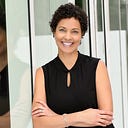Member-only story
The Shifting Definition of Mixed-Race in America
Radical changes in U.S. demographics are reinventing what it means to be multiracial
“Raise your hand if you would see me on the street and think I’m Black?”
Several hands went up in an auditorium full of college students.
“Okay. What about biracial?”
More hands.
“Hmm… And what if I wore my hair in an Afro?”
Still more hands flew into the air.
What are you?
Multiracial people field that question daily.
Not long ago — before, during, and just after the civil rights era — there was often an unspoken understanding that those of us who are biracial should answer to only one race. One reality. One allegiance. Even today, a majority of adults who are multiracial choose not to identify that way.
But others are beginning to question that arrangement.
#Blackipino #Blaxican #Hapa #Blasian
“It’s very much the norm for young people to see themselves as multiracial today,” says Reginald Daniel, a professor of sociology at the University of California Santa Barbara and editor of the Journal of Critical Mixed Race Studies. “That was not the…

